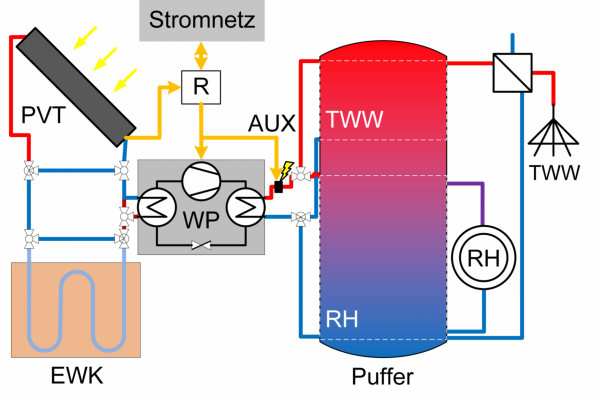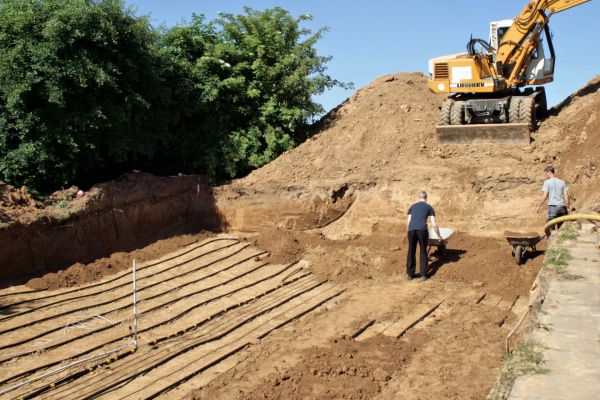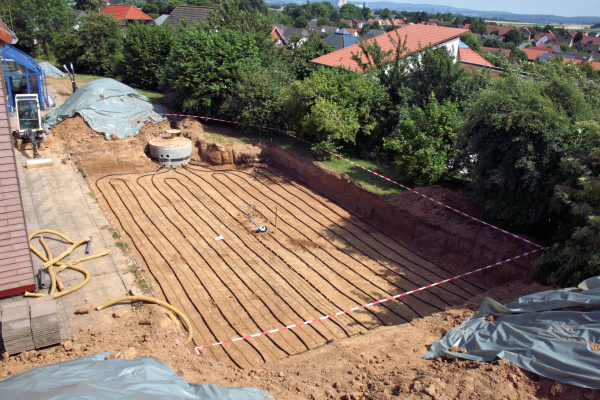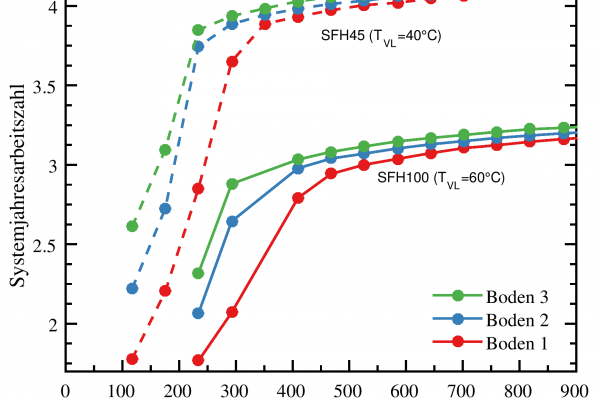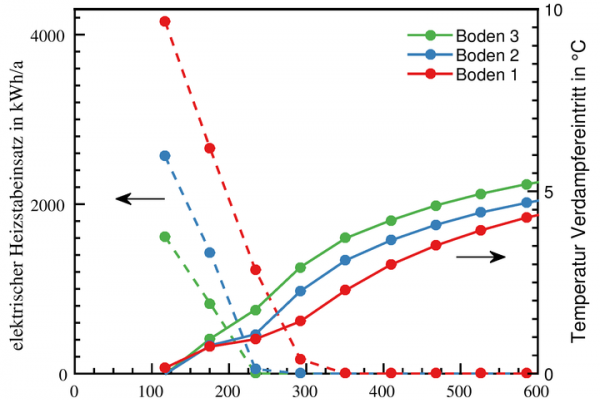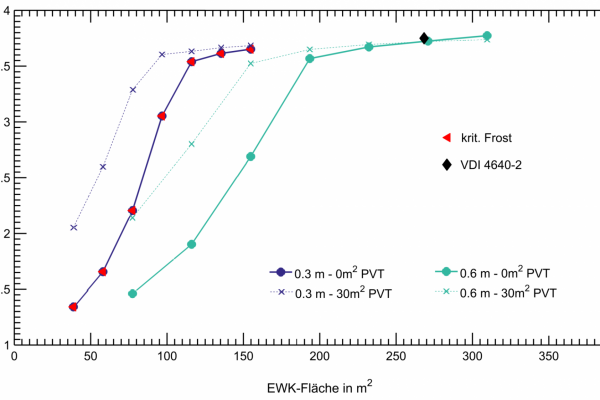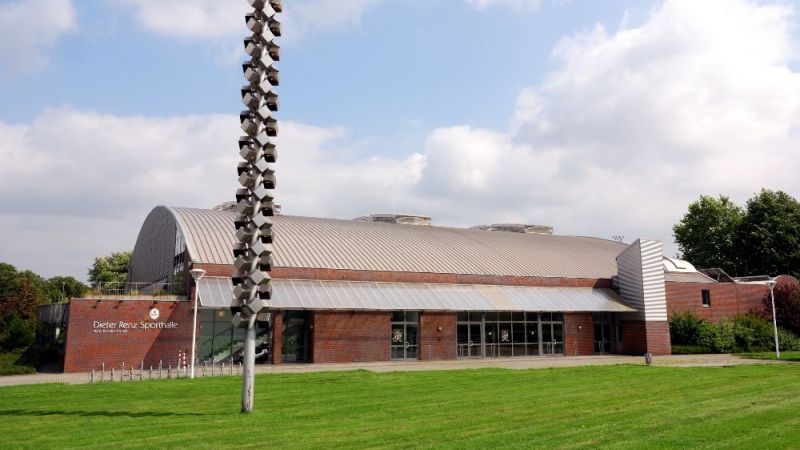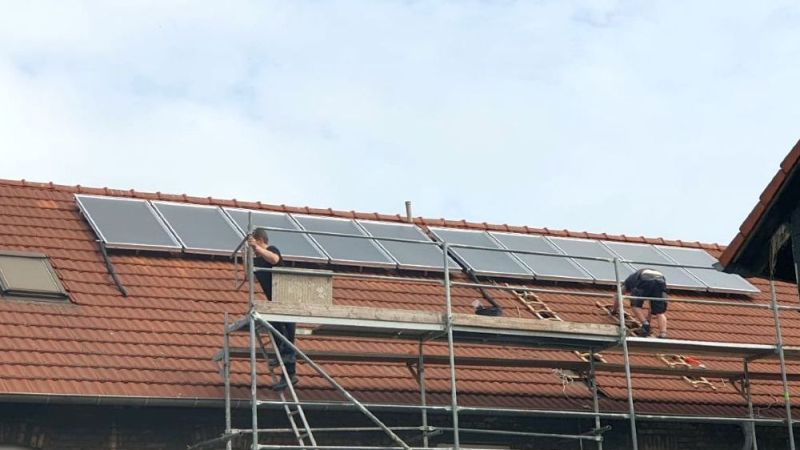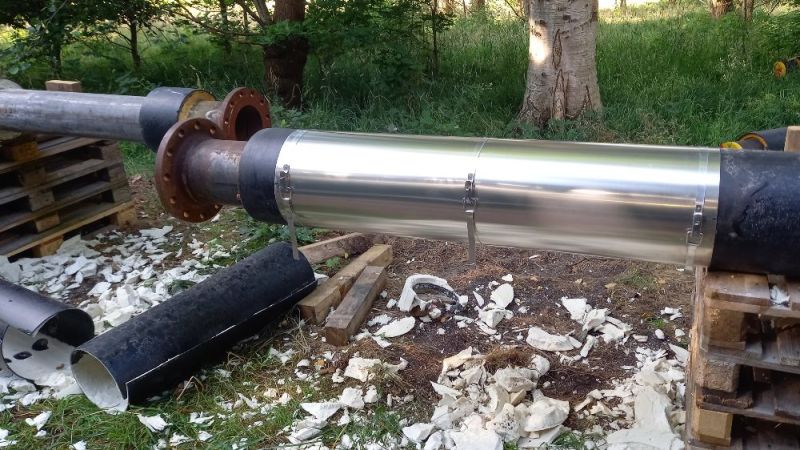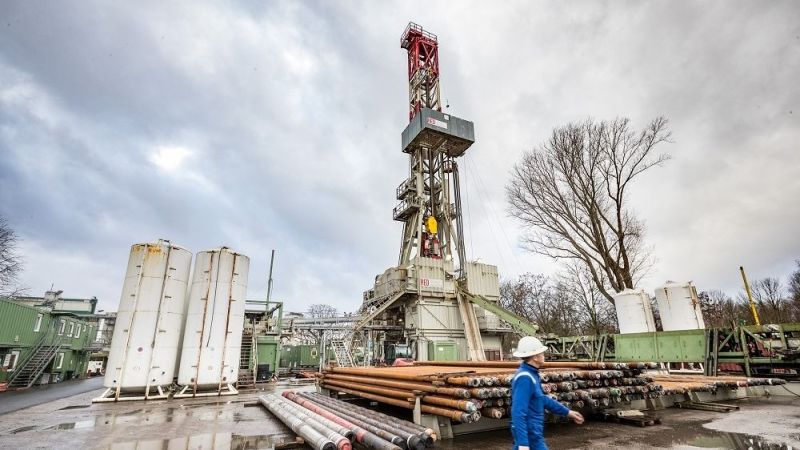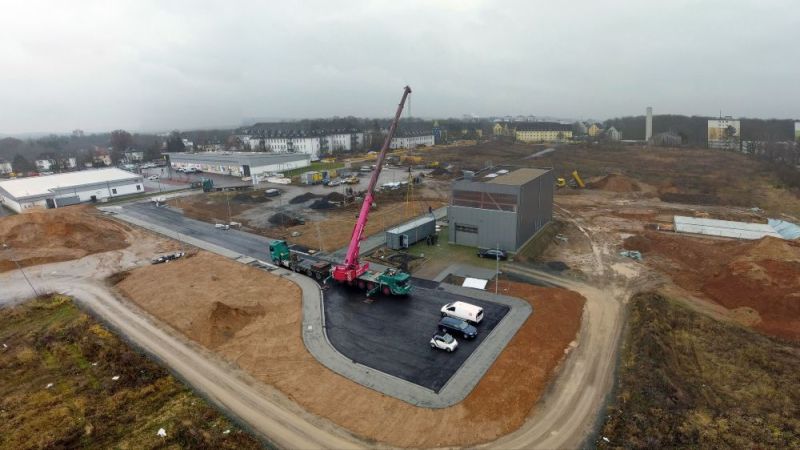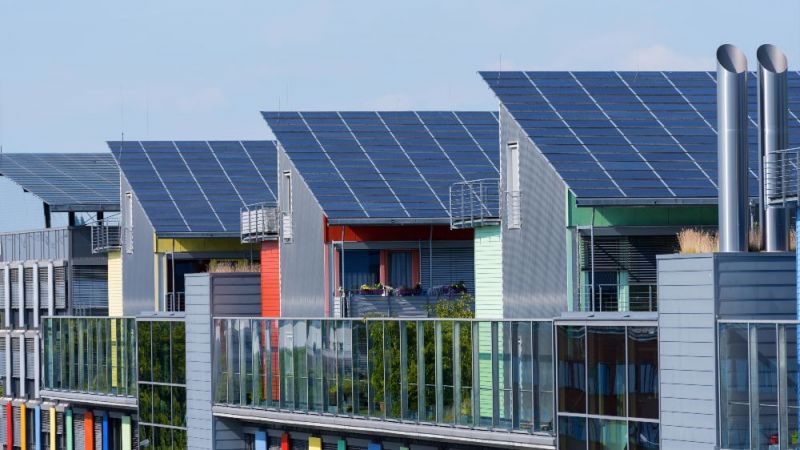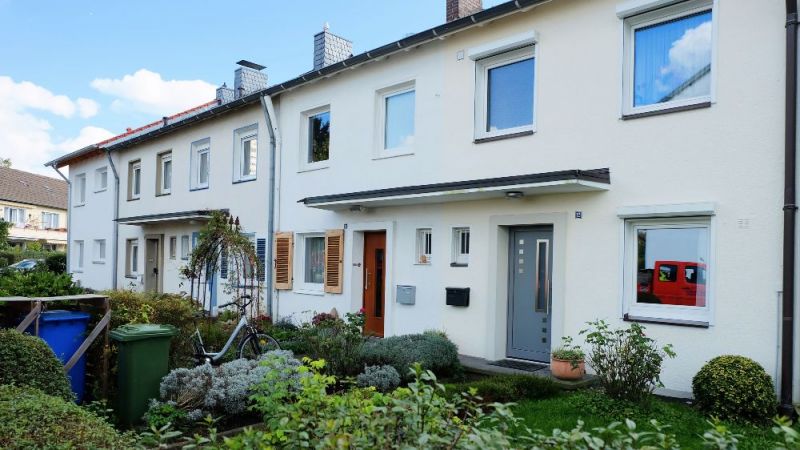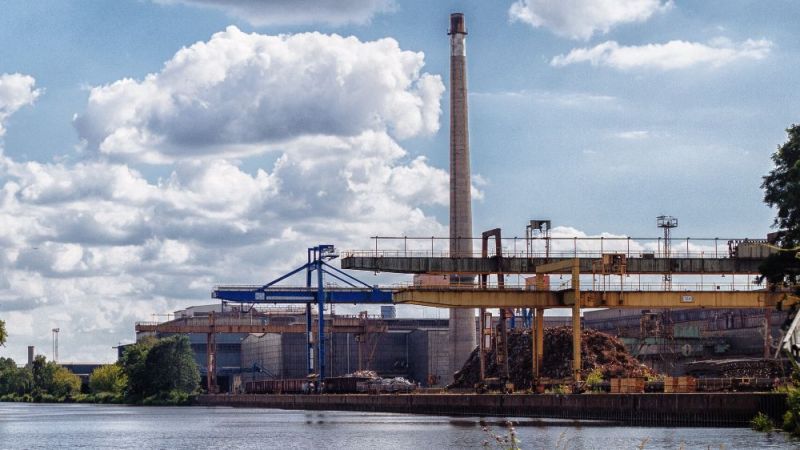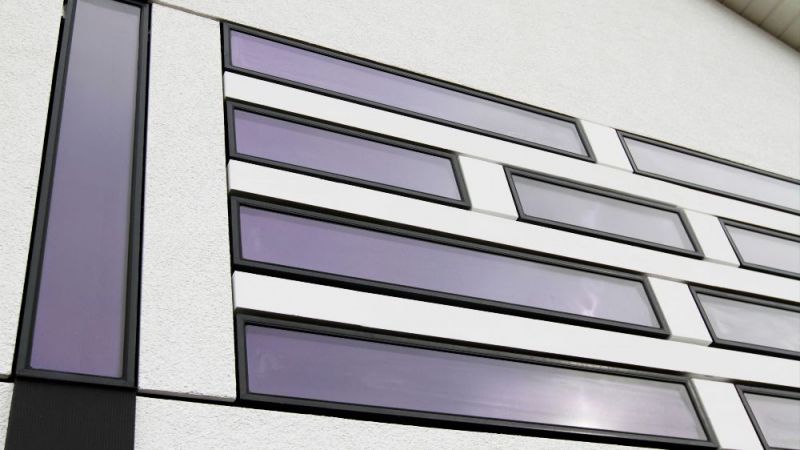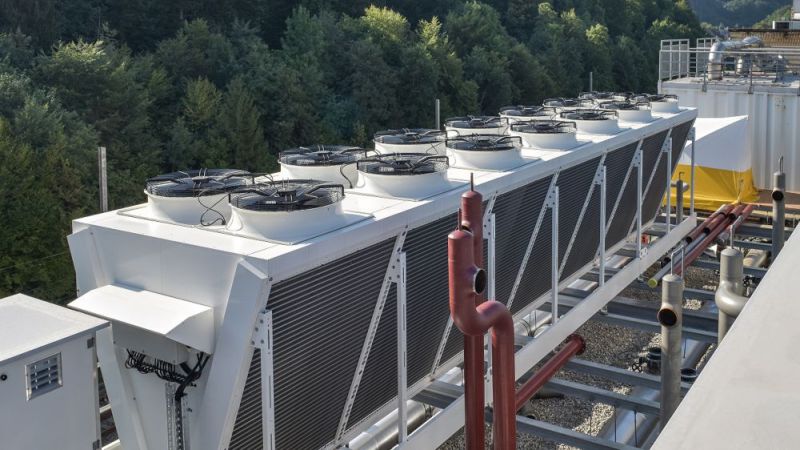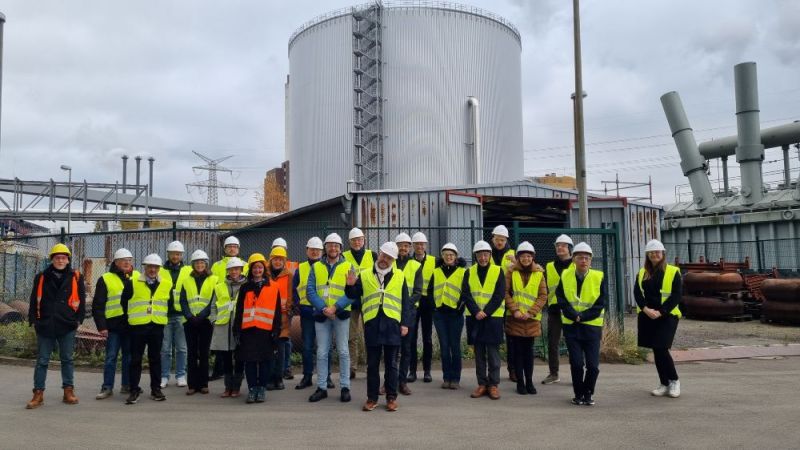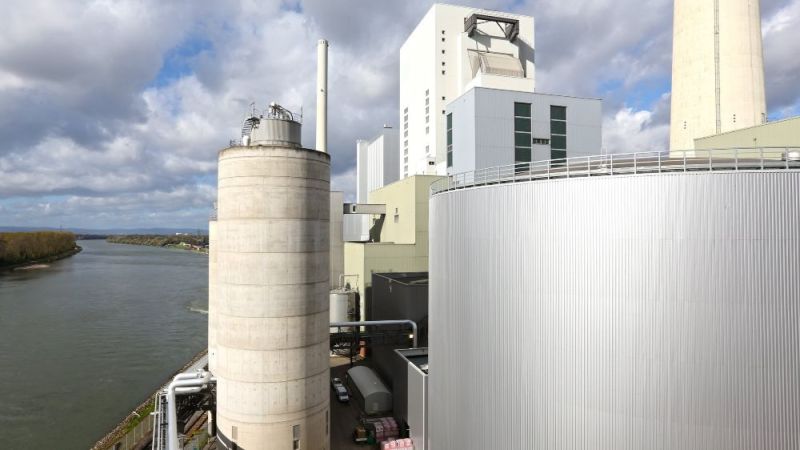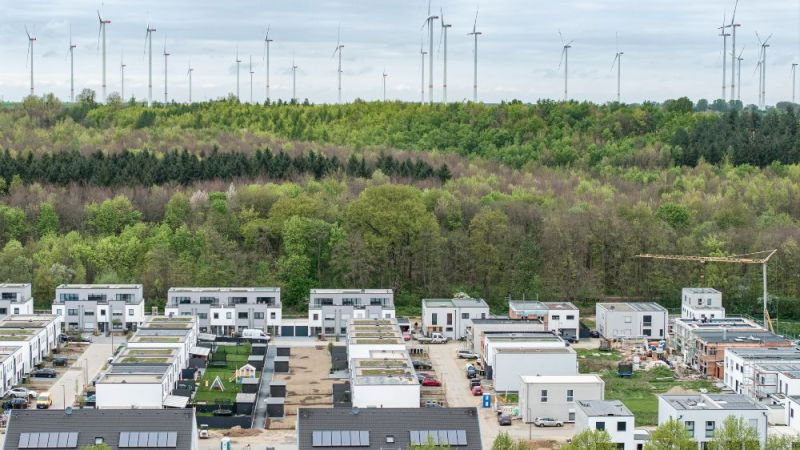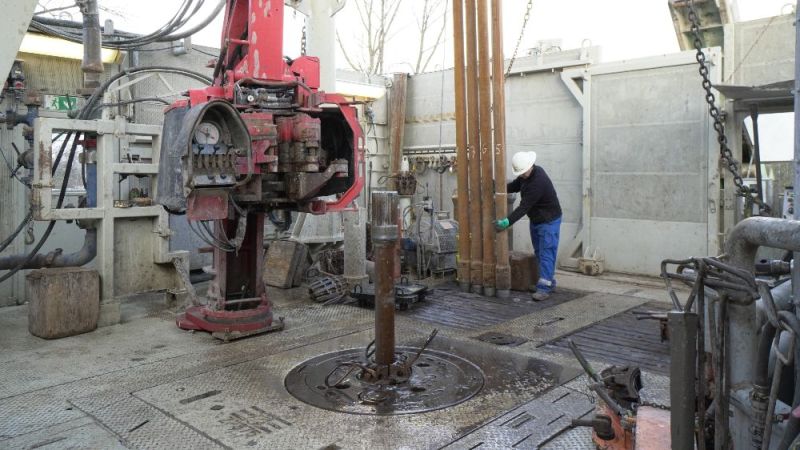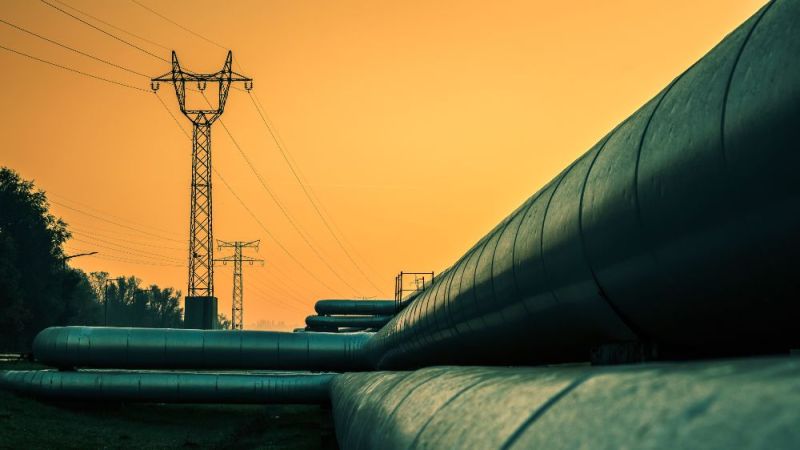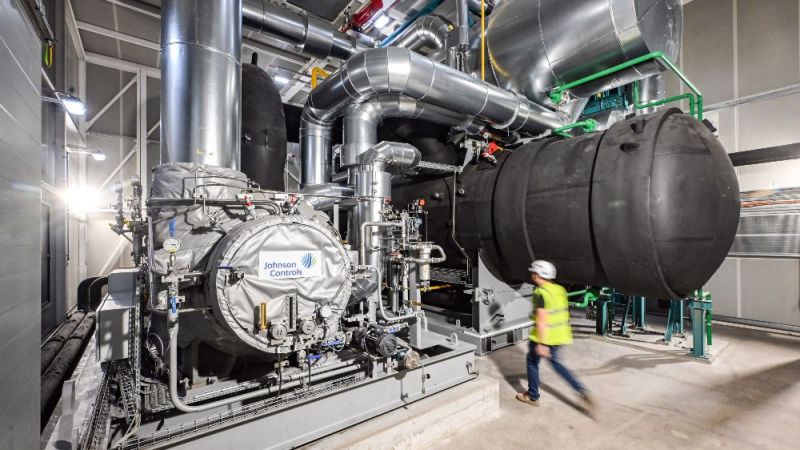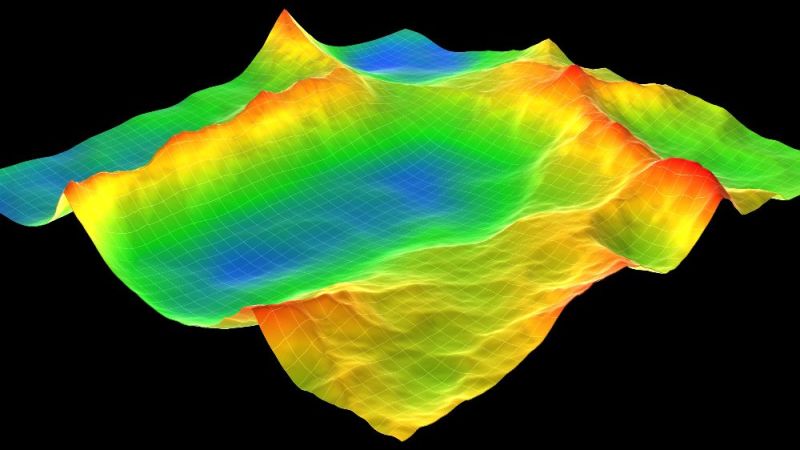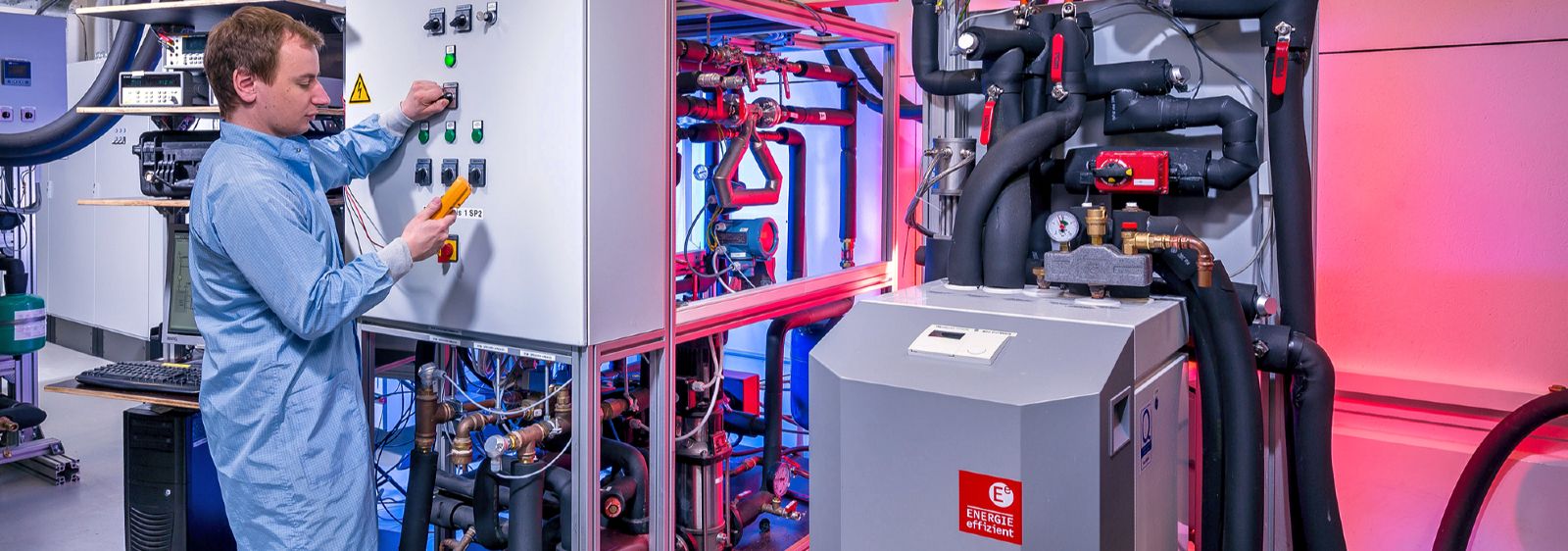
Heat pump systems
Geothermal and solar collectors complement each other as heat sources
Geothermal collectors and solar collectors can be combined as bivalent heat sources for heat pumps. This promises some advantages. In this research project the system behaviour was examined in more detail. In simulation studies, different system configurations with the two heat sources were analyzed, with special attention to thermal depletion of the soil and critical frost conditions. For this purpose, a numerical model for geothermal collectors was developed, which precisely describes the thermal processes.
Heat pump systems with geothermal collectors as heat source are significantly more energy efficient than air/water heat pumps. Compared to geothermal probes, geothermal collectors require less construction work and can be used largely independently of the geological situation of the subsoil. However, geothermal collectors require a comparatively large area, which is why they have rarely been used up to now. Through an occasional solar thermal regeneration of the soil, the required geothermal collector area is significantly reduced and at the same time a thermal depletion of the soil is avoided. Due to the reduced space requirement, geothermal collectors will become attractive for many single-family and multi-family houses.
Research focus
As part of the research project, a TRNSYS model for geothermal collectors has been developed (Type 710). It allows a fine discretization of a two-dimensional cut through the soil, taking into account freezing processes and fluid capacity. It is optimized in TRNSYS for fast, dynamic system simulations. The model was experimentally validated at a specially constructed test facility. Extensive system simulation studies were carried out on this basis in order to determine essential dimensioning parameters. In simulations with differently configured geothermal collectors, solar collectors and different control strategies, the area reduction potentials for geothermal collectors were determined.
Successes
The experimental investigations and the geothermal collectors model are in good accordance, as experimental tests have shown. The TRNSYS model "geothermal collectors" can be obtained free of charge from the ISFH.
The simulation studies further show that the integration of solar collectors into the heat pump system reduces the area required by more than 50 percent depending on the constellation compared to the current dimensioning recommendation of VDI4640-2 (green pressure 05/2015). This is because the soil can be regenerated specifically with solar heat if there is a threat of thermal exhaustion.
An essential parameter here is a reduction in the installation distances of the EWK pipes. A simplified boom rule was determined, which approximates the relationship between specific solar collector area (Asolar/Aewk) and relative geothermal collector area reduction based on the thermal conductivity of the soil. Thus, the previous recommendations for the dimensioning of geothermal collectors are supplemented by the area-reducing influence of unglazed thermal solar collectors.
Application
An information sheet with the simplified interpretation rules will appear here on this website in the third quarter of 2018.
The model for geothermal collectors was implemented as a computer time-optimized component for the simulation software TRNSYS and validated experimentally on the basis of tests at a specially constructed experimental plant at the Institute for Solar Energy Research. It is available free of charge on request (TRNSYS Type 710).
16.12.2021
Plant practice and system design
tewag Technologie - Erdwärmeanlagen - Umweltschutz GmbH
Webadresse: http://www.tewag.de
E-Mail: info@tewag.de
Tel.: +49(0)941-2086-3360
Market analysis and technology transfer
Bundesverband Wärmepumpe e.V.
Webadresse: http://www.waermepumpe.de
E-Mail: info@waermepumpe.de
Tel.: +49(0)30-208-799-723


